Battlefield Visits, Epic Man Trip Edition – Part 4: Coastal North Carolina
From my travels, June 27, 2023
The next morning, we got up and had a quick breakfast at the hotel. It was about a 20 minute drive over to our first stop of the day.
Battle of Plymouth – Civil War Battlefield #167
There is a small museum in the town of Plymouth, NC and we spent a few minutes checking out their displays and artifacts. They have a lot of artillery rounds and bullets, as well as buttons and small camp items that were found during digs at known local army camp sites. The 3/8 scale model of the CSS Albemarle that they have floating in the Roanoke River was a highlight for us.
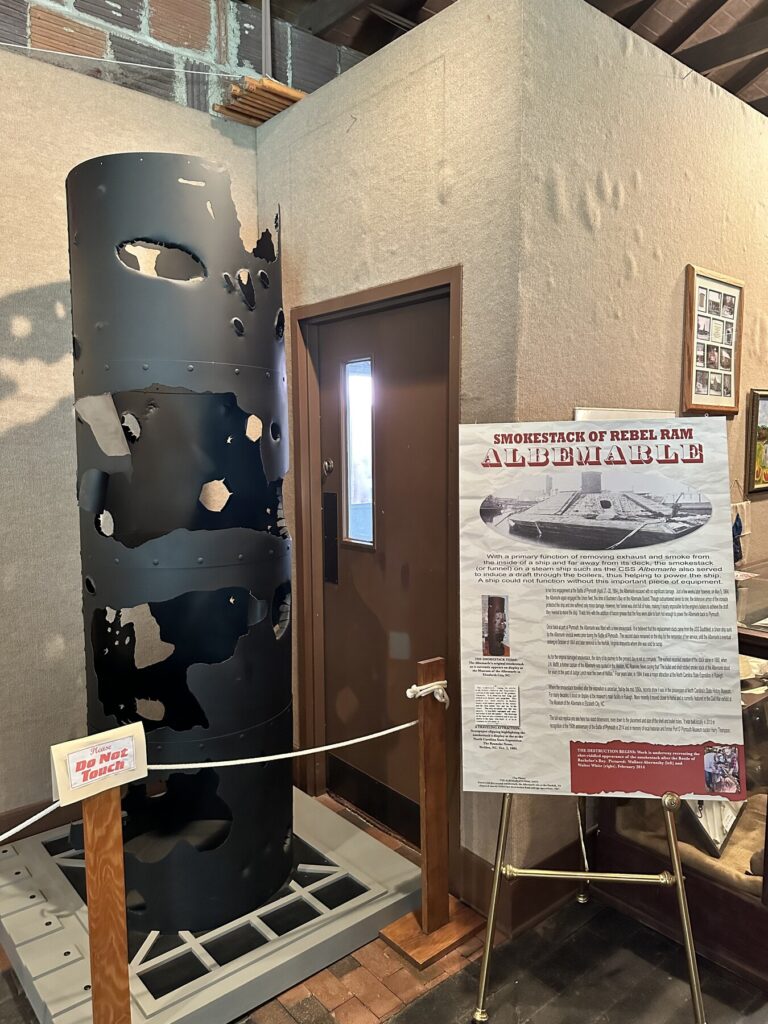
As for the Battle of Plymouth, Union forces had occupied the town and were using it as a base of operations in the area. Confederates decided to re-take it, and a combined land and naval attack using the ironclad ram CSS Albemarle succeeded in destroying the Federal warships while Confederate Maj. Gen. Robert F. Hoke’s division of North Carolinians and Virginians forced the occupying Union troops out of town.
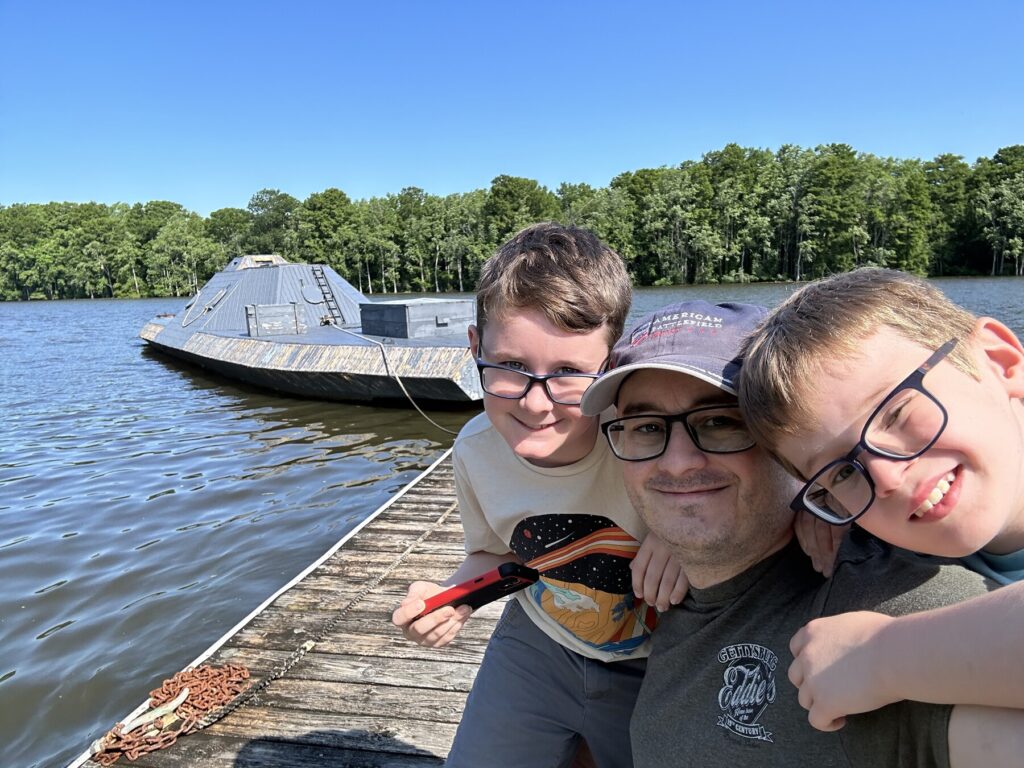
Battle of Albemarle Sound – Civil War Battlefield #168
Here at the Battle of Albemarle Sound, we have a rare, purely-naval Civil War action.
After helping to take back the town of Plymouth, the CSS Albemarle made her way out into Albemarle Sound on May 5, 1864 and found a small fleet of 8 Union gunboats waiting for her. Over the course of the day, the Albemarle held her own against multiple attacks from the gunboats. Attacks involving artillery, ramming, and even attempting to use a net to tangle her propulsion system all failed against the Albemarle. Though badly damaged, she was able to escape back to Plymouth. This fight was a stand-off, but it kept the Confederate naval weapon bottled up in port.
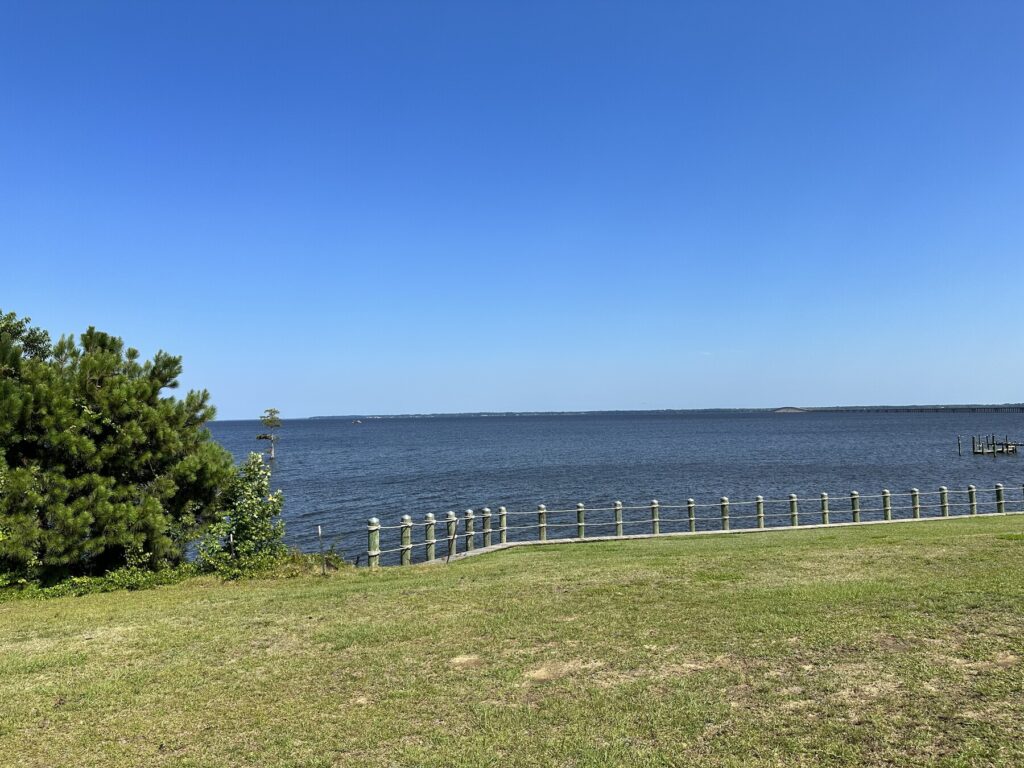
Eventually, a raid led by William B. Cushing would succeed in detonating a naval mine (what they would have called a “torpedo” in those days) under the Albemarle and lead to her sinking.
We didn’t go across to Edenton, NC (where there is at least a wayside about this battle) for road trip routing reasons. We were able to get a photo from near where the action actually took place at the Waterside Resort.
Battle of Roanoke Island – Civil War Battlefield #169
In February of 1862, Union Maj. Gen. Ambrose Burnside was tasked with closing off the Outer Banks to Confederate shipping. As part of that effort, he landed 13,000 troops on the southern end of Roanoke Island and fought his way north. This action became known as the Battle of Roanoke Island. After flushing the rebels from the other forts on the island, the final fighting happened here at Fort Huger. The overwhelmed Confederates had no choice but to surrender.
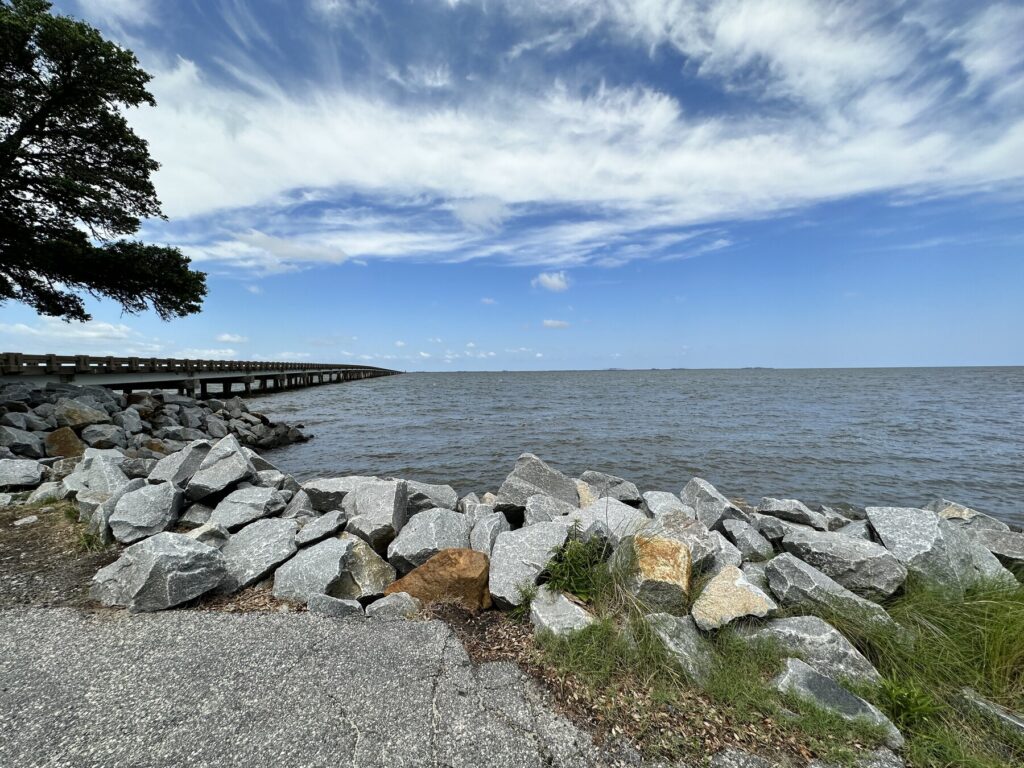
We stopped at Pineapple Beach – right off of US-64‘s William B. Umstead Memorial Bridge – to get a few photos and check out the markers. The visitors center at Fort Raleigh National Historic Site – which we would be visiting next – has some info on the fighting here, as well as the Freedmen’s Colony that was established once the island was under Federal control.
Fort Raleigh National Historic Site
What can I say about Fort Raleigh National Historic Site? There is a lot of history here: from the “Lost Colony” to Civil War fighting, to a Freedmen’s Colony, to the very first voice radio transmission. Definitely worth visiting if you’re in the vicinity of the Outer Banks!
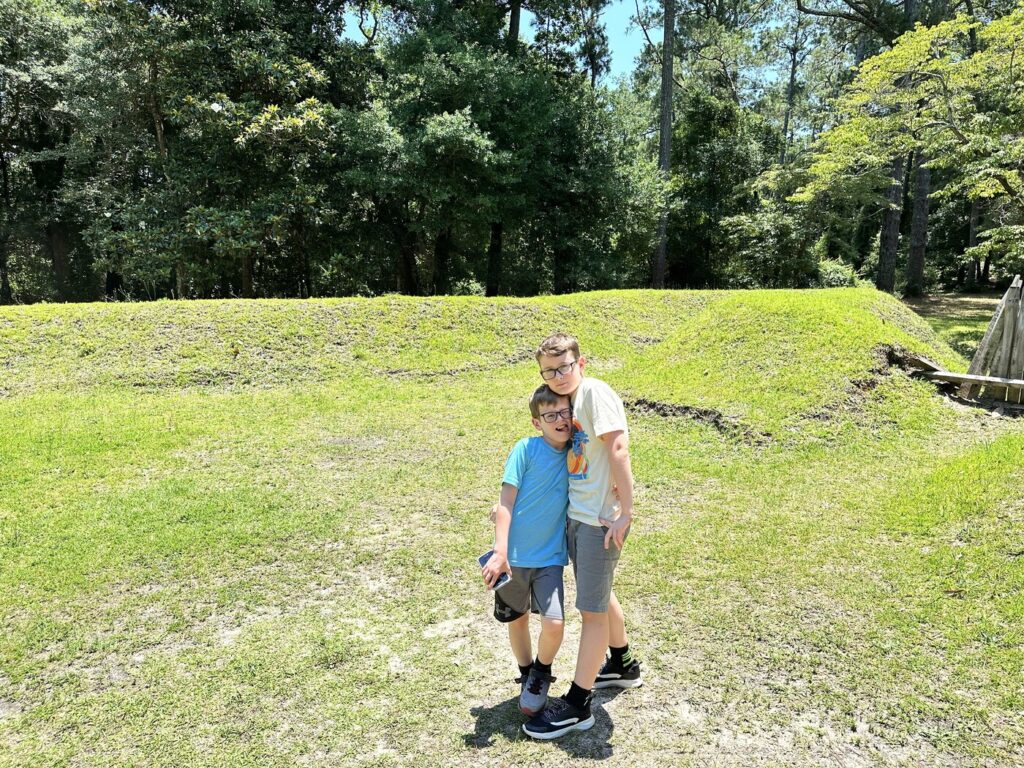
We browsed the museum in the visitors center – critical to the completion of their Junior Ranger program – and checked out the movie, and the reconstructed Fort Raleigh. The rangers were very friendly, and in addition to awarding the boys their badges, gave us bonus Junior Ranger books for the Underground Railroad Network to Freedom. Those would come in handy a little later.

We grabbed a quick lunch at the Olde Towne Creamery in Manteo, and then we made our way onto the Outer Banks.
Wright Brothers National Memorial
This one had been circled on the itinerary for a while. The boys were very excited to visit Wright Brothers National Memorial.
There is a very nice museum in the visitors center that talks about the brothers’ lives and especially their constant experimentation with powered and controlled flight. The 1903 Wright Flyer they display here is only a replica, but they have a few real pieces of the aircraft that were used here. I guess I’m starting to get over my aviophobia, because it was pretty magical to stand on the ground where it actually happened.
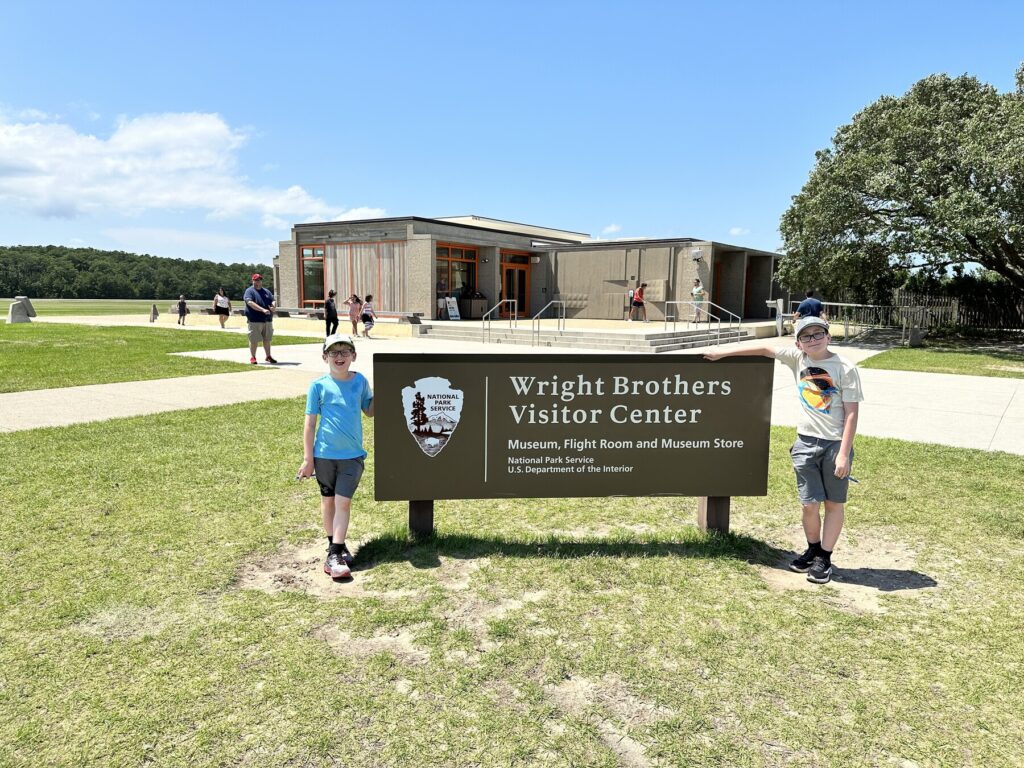
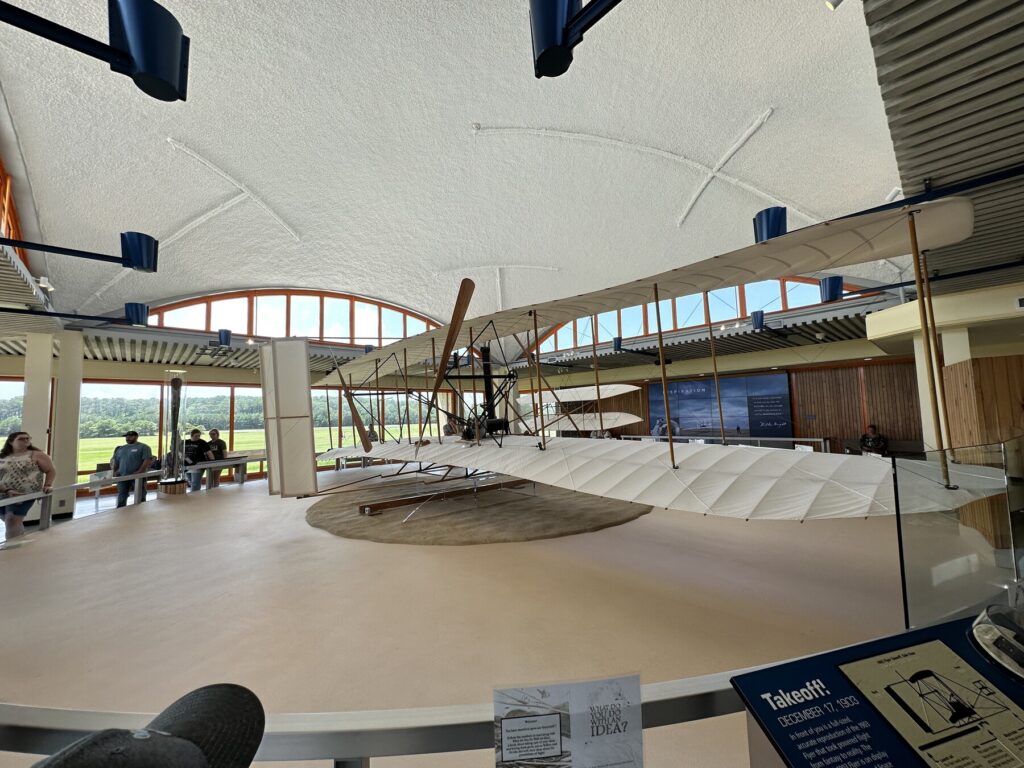
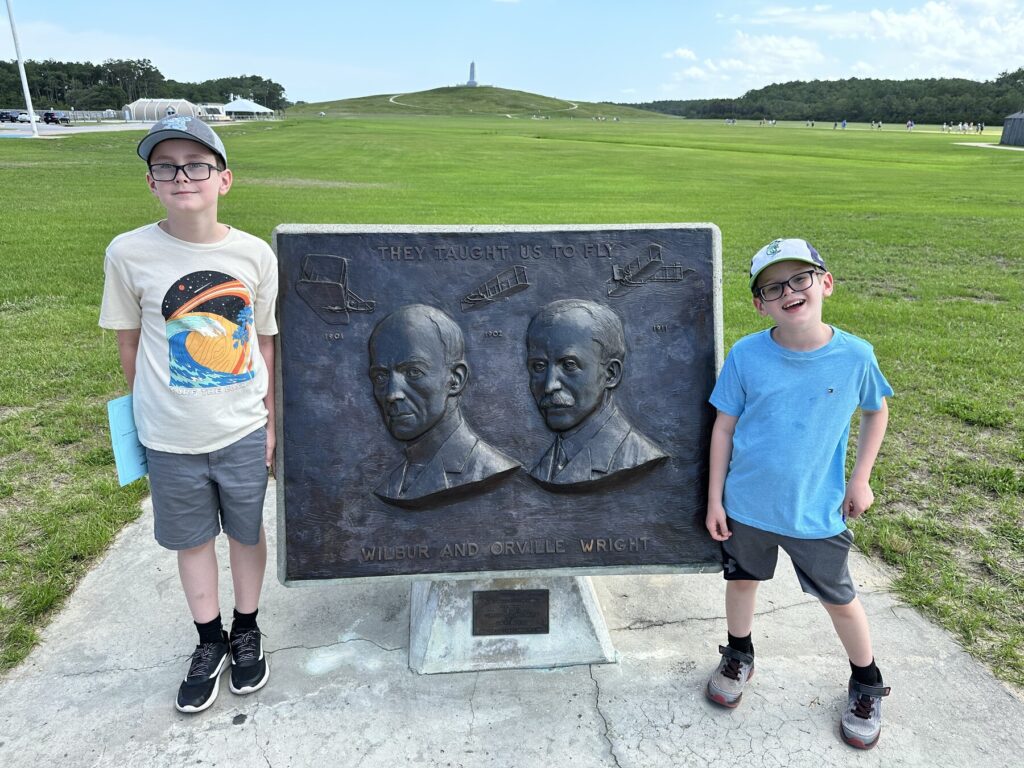
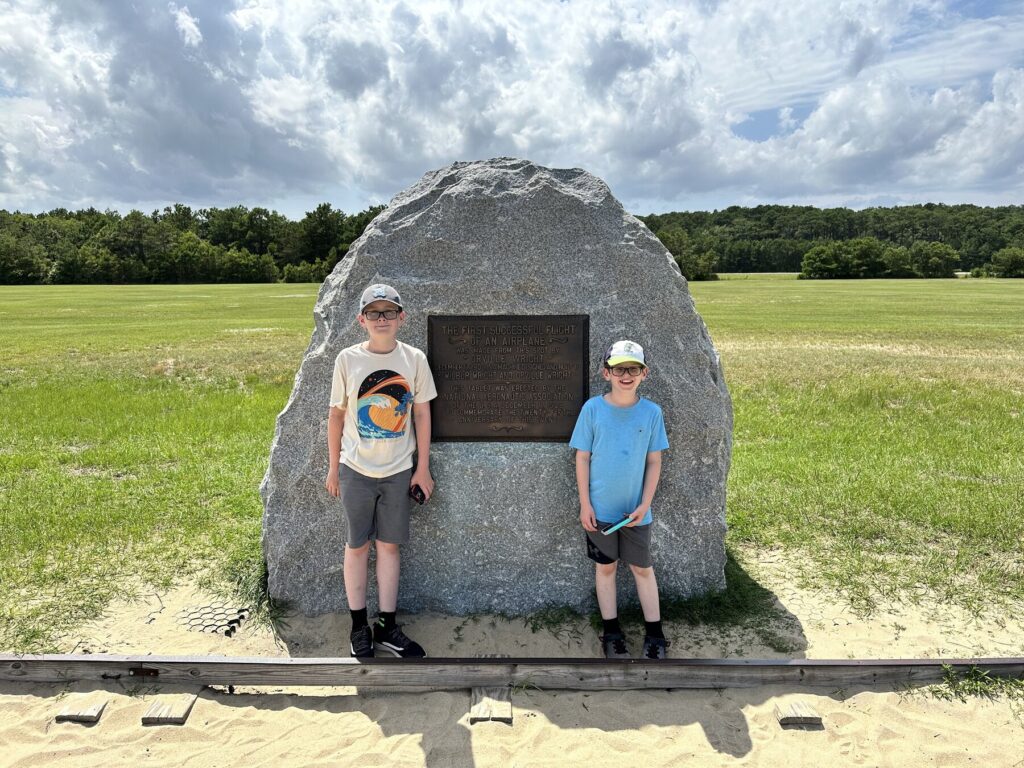
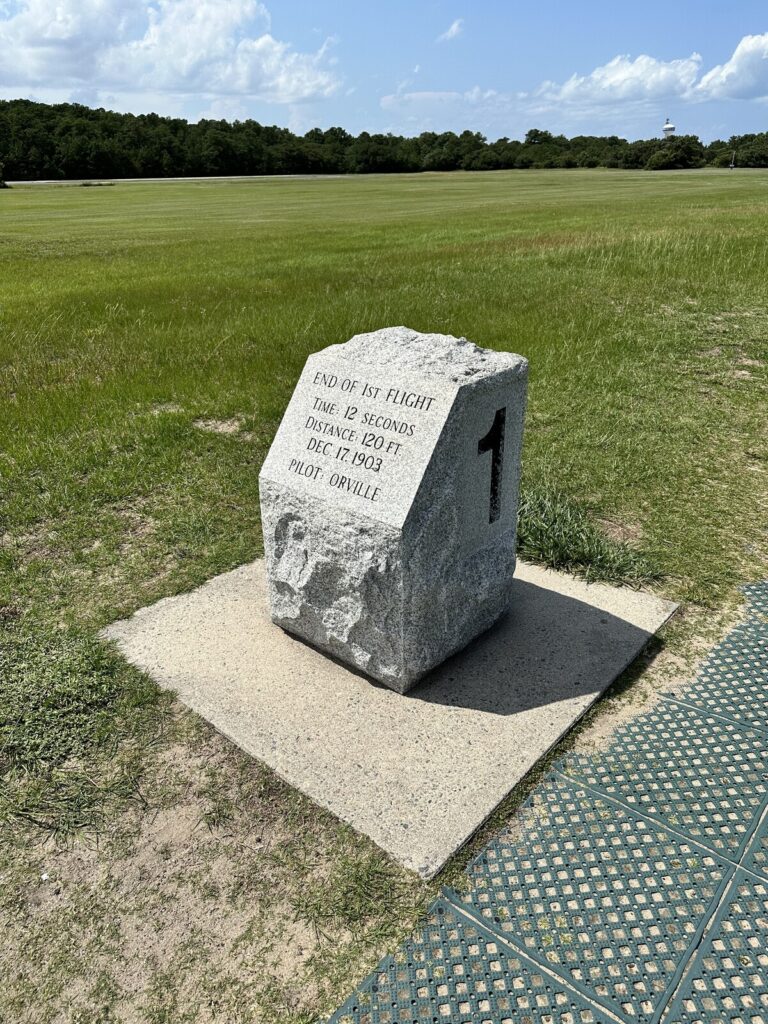

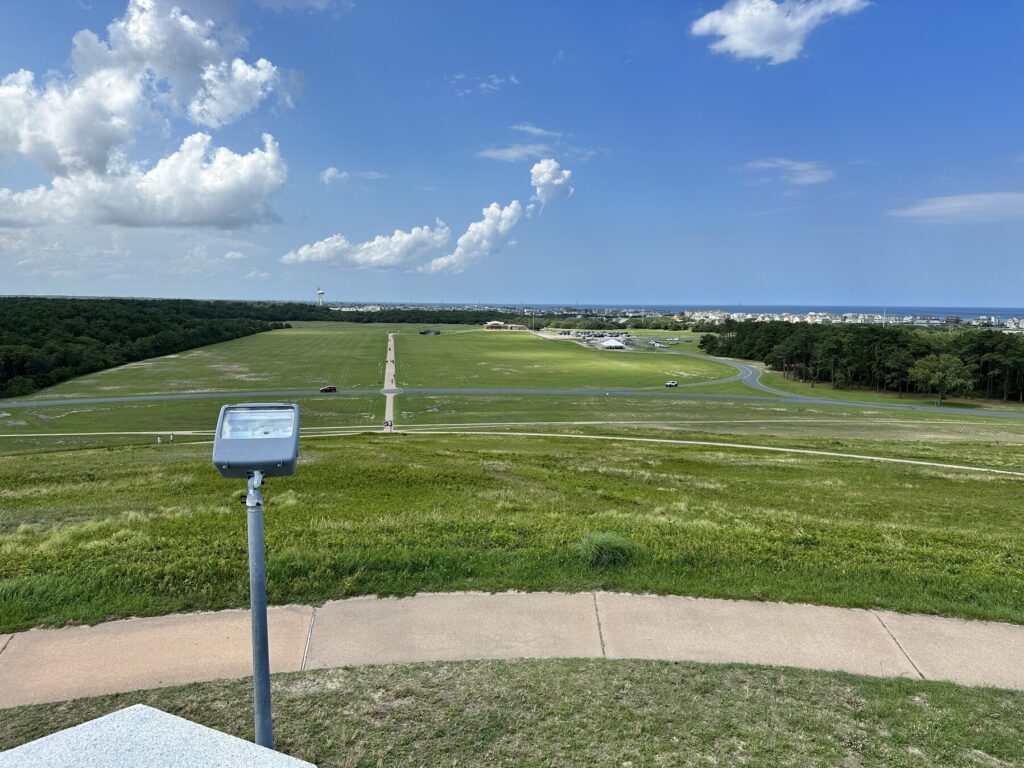
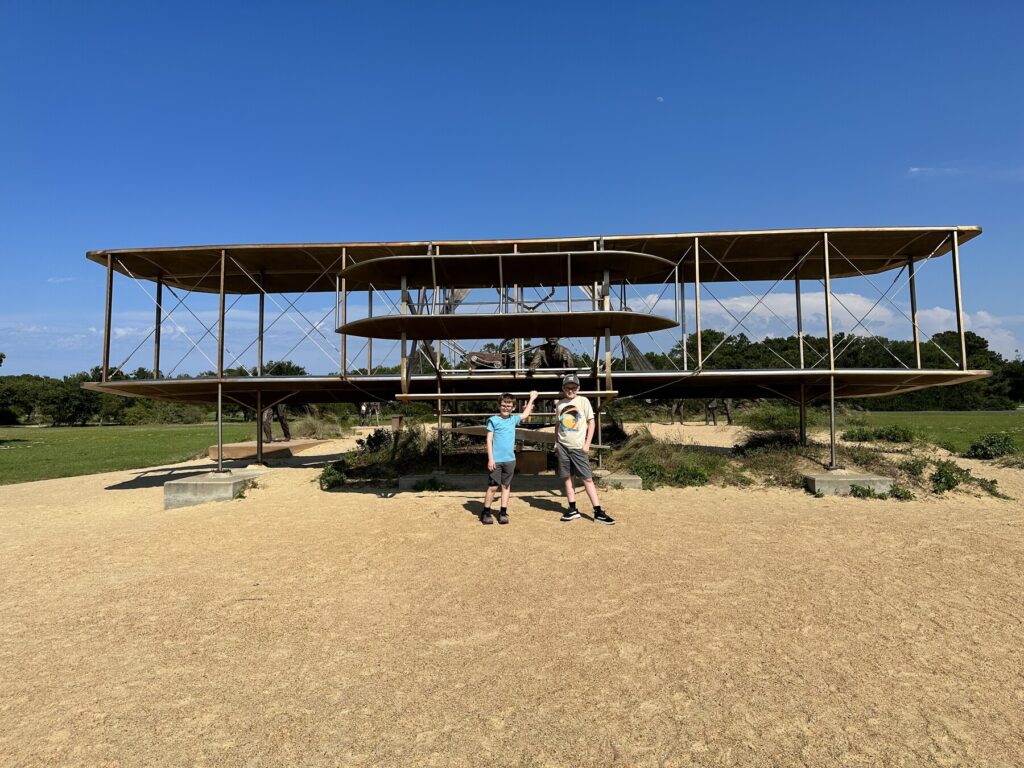

We made the hike up Big Kill Devil Hill so the boys could get their photo with the monument at the top. The view was very impressive.
After our visit, John told me that this was his favorite Junior Ranger badge so far because of the image of the Wright Flyer on it.
Battle of South Mills – Civil War Battlefield #170
There was concern among the Union commanders in North Carolina that the canal through the Great Dismal Swamp could be used to transfer rebel ironclads from Norfolk down to Albemarle and Pamlico Sounds. This would threaten the Federal troops in the area. In reality, there were no such ironclads, but the CSS Virginia at the Battle of Hampton Roads had created a lot of fear.
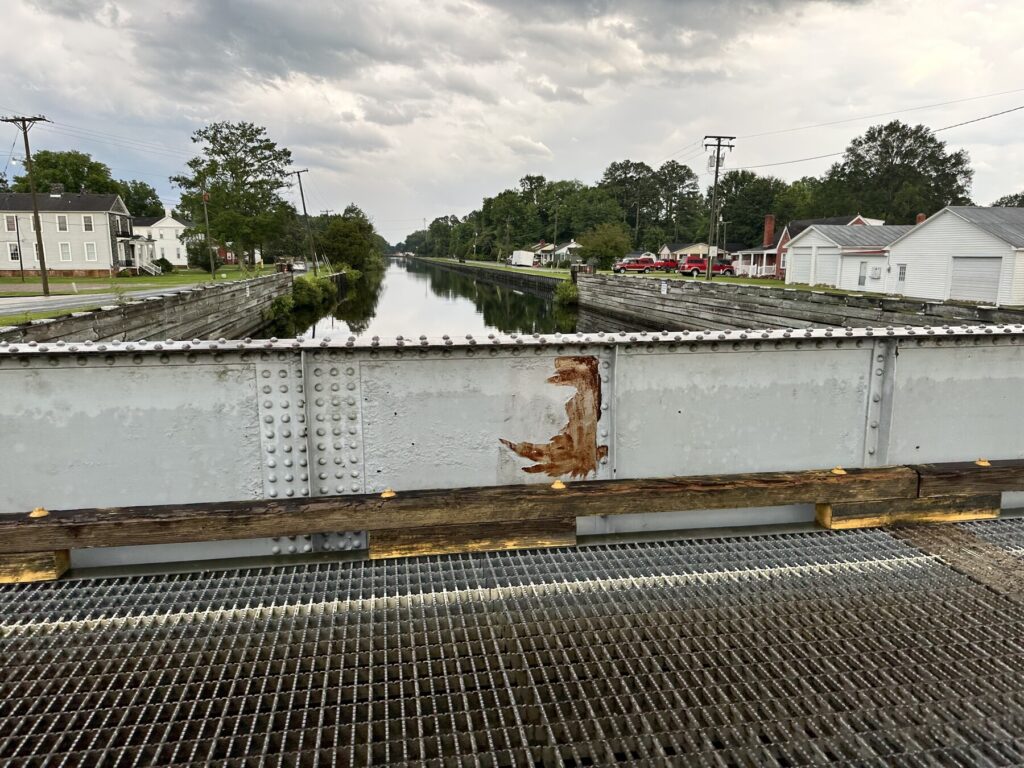
To counter this supposed threat, Brig. Gen. Jesse L. Reno was sent with about 3,000 troops to destroy locks along the canal at the Battle of South Mills. Unfortunately, Reno opted for an overnight forced march, so when his troops arrived and encountered only about 900 Confederate troops, they were already exhausted and confused. They wasted hours trying to outflank the southerners, and ultimately left without doing any real damage to the canal.
There is a wayside that talks about the action next to the canal in the town of South Mills.
Siege of Suffolk – Civil War Battlefield #171
The “official” battles around Suffolk, VA are a little confusing. The CWSAC seems to list them multiple different ways, with at least two different “Battles of Suffolk” being contained within an over-all “Siege of Suffolk“. For my purposes, I’m listing the “Battle” as being the action at Hill’s Point, while the “Siege” is the action at the Norfleet House. As I learn more about these actions, I hope to get more clarity.
Union troops had occupied Suffolk – mainly as a way to protect land approaches to Norfolk – since the spring of 1862. The following year, Confederates under Lt. Gen. James Longstreet were in the area attempting to gather food and supplies. Longstreet decided to lay siege to the Union forces in order to keep them from interfering with those foraging operations. He was never able to truly *cut-off* Suffolk, but he did keep the Union troops occupied.
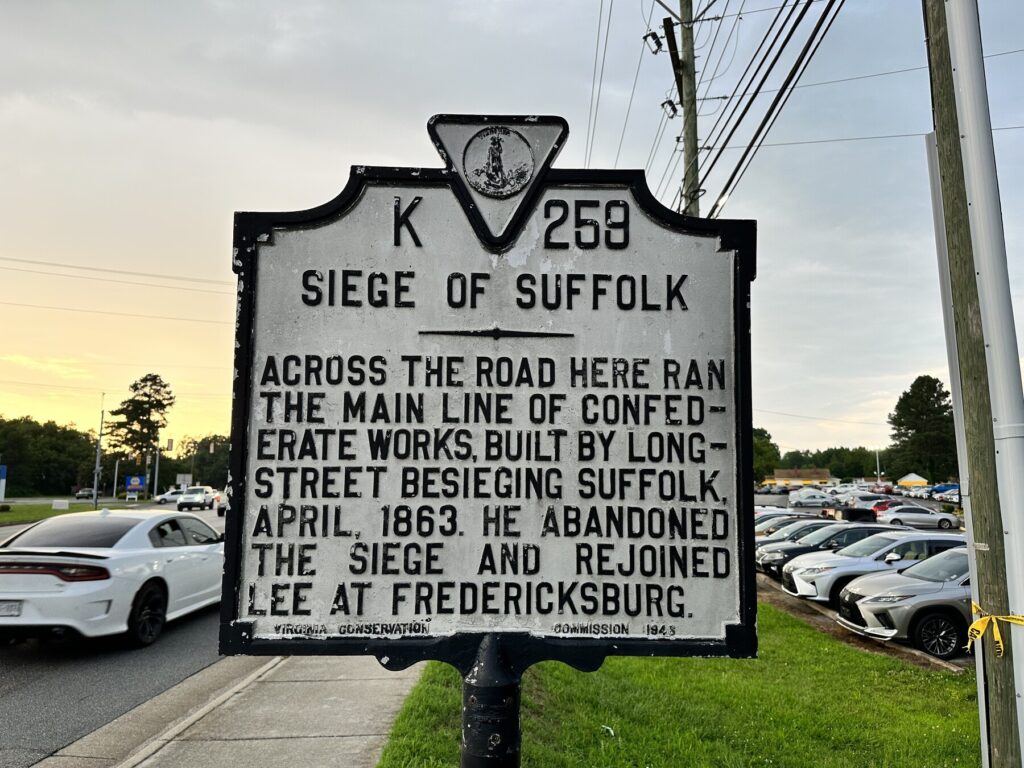
A rebel artillery battery was constructed across the Nansemond River from here, at the Norfleet House, to discourage and destroy Union supply ships from coming upstream. While they succeeded in disabling at least one such craft, Union gunboats as well as artillery positions that were constructed here forced the Confederates to abandon their position.
Within a few weeks, Longstreet was ordered to rejoin Gen. Robert E. Lee‘s Army of Northern Virginia at the start of the Battle of Chancellorsville, ending the siege. Though he never captured Suffolk, he was successful in gathering supplies. It’s unclear who the winner was here.
I wasn’t able to get a great photo at the spot that the Union artillery occupied. The area is now a neighborhood, and I didn’t want to get in anyone’s backyard.
Battle of Suffolk – Civil War Battlefield #172
The Battle of Suffolk here at Hill’s Point / Fort Huger is probably the most interesting of the actions around the Siege of Suffolk in the spring of 1863.
Fort Huger was another hastily-built earthwork fort along the Nansemond River that was meant to stop Federal supply ships. On April 19, Federal batteries opened fire on the fort all day, hoping to weaken the defenses there. Just as night was beginning to fall, about 300 Union soldiers landed from river boats near the fort, and assaulted the earthworks from the rear. The fort fell, and over a hundred rebel prisoners were taken.
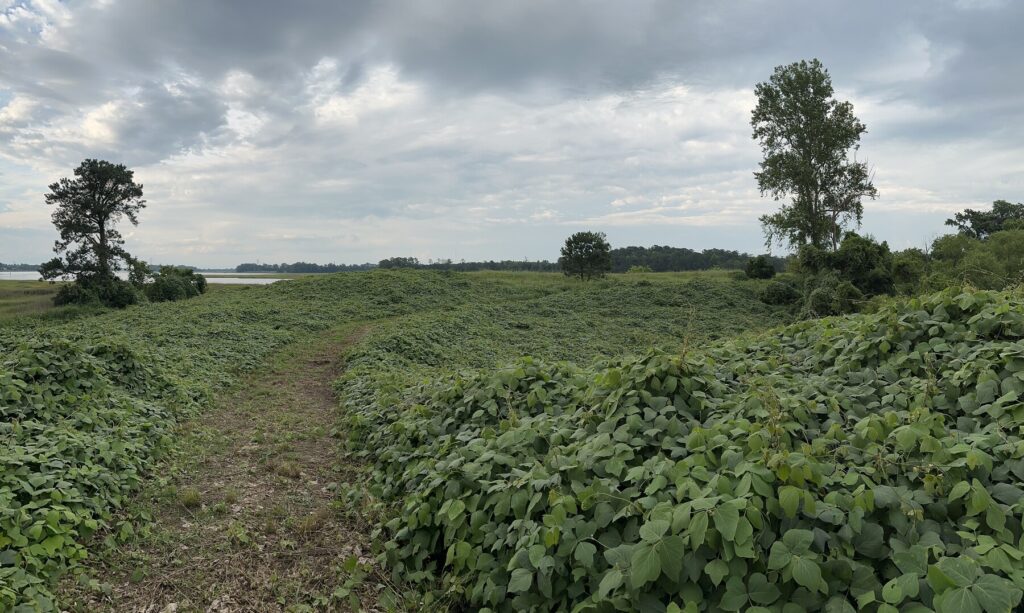
The fort amazingly still exists. The boys and I walked down close to it to get a photo (earthworks are notoriously hard to photograph, so you may need some imagination). For many years, the remains of Fort Huger were contained within a golf course, but the property is now being converted into a neighborhood. There is still construction happening here, but the fact that there is a path laid out gives me some hope that the remains of the fort may be preserved. I know there is a local group that is active in trying to put together tours. Hopefully they are making some noise.